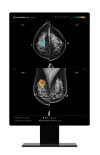Breast cancer patients under 35 face higher risk of cancer spreading
by John R. Fischer, Senior Reporter | November 12, 2021
Women's Health

Women with breast cancer under 35 are at higher risk of their cancer spreading to other body parts
Women with breast cancer who are 35 and under are at the greatest risk of any age group for their cancer to spread. That’s what researchers said at the sixth International Consensus Conference for Advanced Breast Cancer while discussing their study on the concept.
The first global study of its kind, the research is a meta-analysis of 400 studies and found that the risk of breast cancer spreading to other body parts ranges from 6% to 22%. Altogether, the studies contained data on tens of thousands of women across North and South America, Europe, Africa, Asia and Oceania. For women 35 and younger, the risk is 12.7% to 38%, compared to 3.7% to 28.6% for women age 50 and older, reported The Guardian.
“The data shows that people diagnosed with primary breast cancer aged 35 years or younger have the greatest chance of developing secondary breast cancer. The study also highlights that the size of the tumor, the type of breast cancer and the length of time since primary diagnosis can impact a person’s risk,” said Kotryna Temcinaite, senior research communications manager at the charity, Breast Cancer Now, in a statement.
Most women are diagnosed when cancer is confined to the breast or has only spread to nearby tissue. Secondary breast cancer can develop many years after an initial cancer diagnosis is made and sometimes does not spread but comes back in a different part of the body several years after initial treatment has ended. Treatment at this point becomes much harder and the risk of dying is higher, according to Dr. Eileen Morgan, of the International Agency for Research on Cancer (IARC), who presented the study.
"Historically, cancer registries have not routinely collected information on cancer recurrence and no guidelines to define these have been established," she told HCB News. "We plan to investigate how studies have previously defined metastatic recurrence to help inform cancer registries on how this can be done."
Patients with larger tumors when initially diagnosed are also at increased risk, as are those with specific forms of the disease. For instance, patients diagnosed with type luminal B have a 4.2% to 35.5% risk of their cancer spreading, compared to those with luminal A cancer, who have a 2.3% to 11.8% risk.
The risk is broad, according to Morgan, and can be influenced by a whole range of factors, including initial treatment, subtype of cancer and at what stage patients are diagnosed. While a firm reason has not yet been established, she says that women under 35 may have a higher risk of metastasis “because younger women have a more aggressive form of breast cancer or because they are being diagnosed at a later stage.”
The first global study of its kind, the research is a meta-analysis of 400 studies and found that the risk of breast cancer spreading to other body parts ranges from 6% to 22%. Altogether, the studies contained data on tens of thousands of women across North and South America, Europe, Africa, Asia and Oceania. For women 35 and younger, the risk is 12.7% to 38%, compared to 3.7% to 28.6% for women age 50 and older, reported The Guardian.
“The data shows that people diagnosed with primary breast cancer aged 35 years or younger have the greatest chance of developing secondary breast cancer. The study also highlights that the size of the tumor, the type of breast cancer and the length of time since primary diagnosis can impact a person’s risk,” said Kotryna Temcinaite, senior research communications manager at the charity, Breast Cancer Now, in a statement.
Most women are diagnosed when cancer is confined to the breast or has only spread to nearby tissue. Secondary breast cancer can develop many years after an initial cancer diagnosis is made and sometimes does not spread but comes back in a different part of the body several years after initial treatment has ended. Treatment at this point becomes much harder and the risk of dying is higher, according to Dr. Eileen Morgan, of the International Agency for Research on Cancer (IARC), who presented the study.
"Historically, cancer registries have not routinely collected information on cancer recurrence and no guidelines to define these have been established," she told HCB News. "We plan to investigate how studies have previously defined metastatic recurrence to help inform cancer registries on how this can be done."
Patients with larger tumors when initially diagnosed are also at increased risk, as are those with specific forms of the disease. For instance, patients diagnosed with type luminal B have a 4.2% to 35.5% risk of their cancer spreading, compared to those with luminal A cancer, who have a 2.3% to 11.8% risk.
The risk is broad, according to Morgan, and can be influenced by a whole range of factors, including initial treatment, subtype of cancer and at what stage patients are diagnosed. While a firm reason has not yet been established, she says that women under 35 may have a higher risk of metastasis “because younger women have a more aggressive form of breast cancer or because they are being diagnosed at a later stage.”
1(current)
You Must Be Logged In To Post A CommentRegisterRegistration is Free and Easy. Enjoy the benefits of The World's Leading New & Used Medical Equipment Marketplace. Register Now! |
|









